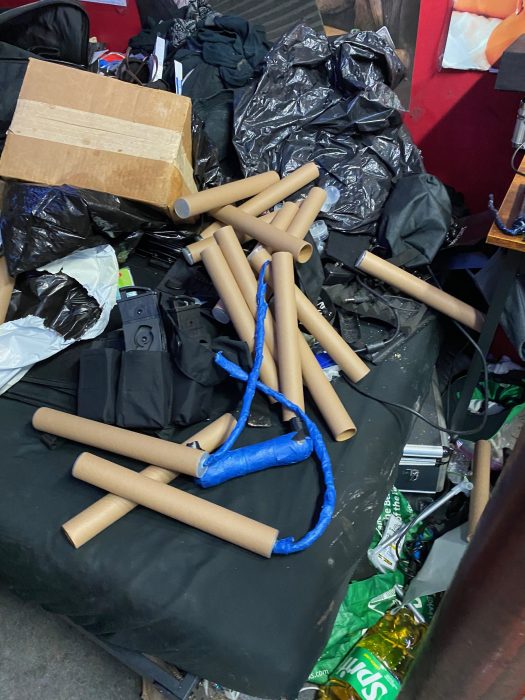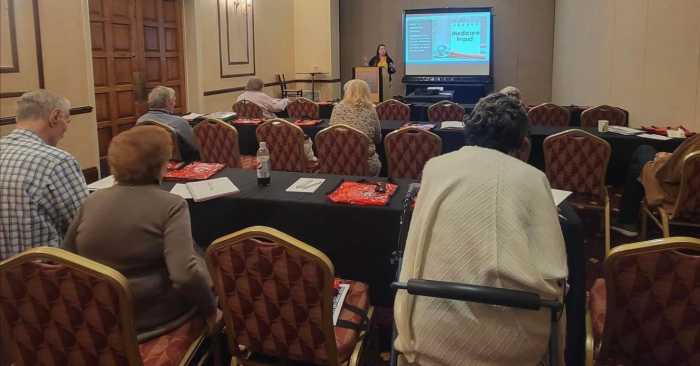The postgame handshake? Sorry, not allowed. The fist bump, high-five or hug after a score or a victory? Forbidden.
Sportsmanship and the age-old rituals of athletic competition will have to take a back seat to safety as student-athletes get ready to engage in high-risk sports across New York State.

On Jan. 22, Governor Andrew Cuomo, citing declining COVID positivity rates, unexpectedly allowed sports such as basketball and wrestling—labeled “high risk”—to go ahead.
The New York State Department of Health (DOH) unveiled a long list of guidelines under which competition can take place. Practices can begin on Feb. 1 and basketball contests can start as early as Feb. 8 with wrestling matches to follow Feb. 10. Spectators will be limited, and masks, hand washing and other safety protocols will be enforced.
The Nassau County Department of Health signed off on the new regulations, and on Jan. 27, County Executive Laura Curran and Health Commissioner Dr. Larry Eisenstein presided at a press conference at Bay Park in East Rockaway.
“We’re here to announce that Nassau County is giving the go-ahead—we’re making it official now. We’re letting our kids to play ball,” Curran said. “The state has given thorough guidance to let athletes get back safely on the fields and the courts. Kids need to be out, they need to play. It’s important for their development. It’s important for scholarships.”
Curran said she had faith that all 56 public school districts would make the right choices. Individual districts and even parents and guardians could opt out of participating if they so chose.
Districts will need to file a safety plan with the county’s DOH, and there will be spots checks by DOH personnel to assure compliance.
Curran asked parents to be vigilant, citing post-game parties where teens may engage in risky behaviors.
“As we know, social events are where diseases spread,” she said. “We wouldn’t want an outbreak to happen at a post-game party. Because you know what’s going to happen—COVID-19 spreads, then the sports shuts down. We worked really hard to get here. Let’s not blow it and shut it down by doing things that are out of the schools’ control.”

(Photo by Frank Rizzo)
In August, the Section VIII Athletic Council, which regulates Nassau County interscholastic contests, decided to postpone all fall sports. Executive Director Pat Pizzarelli told Curran that she had been a sports supporter all along, even after the controversial decision to postpone.
“I don’t think you agreed with us, but I think it was in the best interests of our student-athletes,” he observed. “I’m thrilled that we are going to be starting all our sports.”
He revealed that he had received lots of hate mail because everyone thought he had on his own made the decision to cancel the season.
“I’m a little concerned about wrestling, I’ll be honest,” Pizzarelli confessed to reporters. “You’ll be in close contact when you are wrestling an opponent. But they’ve had wrestling in other states and they haven’t had a problem, so we’re going to go for it.”
He added, “I stressed to our athletic administrators just yesterday that they must stress to their coaches that they must be diligent in keeping the safety of our student-athletes as our number one priority. We don’t want this to affect our schools, our student-athletes, our teachers or our communities.”
Pizzarelli and Eisenstein both took on the question of why sports were canceled in August when the county positivity rate was under 1 percent and allowed now, with the rate recently topping 10 percent (though falling).
“Everything in medicine is risk and benefit,” Eisenstein said. “Right now the rate of infections is dropping. We understand there is a benefit to athletic participation. It’s a social development. It’s important for the future of some of our athletes, who are looking at the opportunity for college scholarships. That could be an important financial opportunity for them going forward.”

(Photo by Frank Rizzo)
He added, “No one is going to say there is zero risk in a wrestling match. But [it could be mitigated] by following the guidance as laid out, if the coaches and the parents and the school district enforce it, and make sure that there are no social events afterwards which are high risk. When there is a [positive] case, we’re going to be quarantining. It won’t matter to the health department if it’s a championship game. That’s the way it’s going to be done safely.”
Pizzarelli said there was still uncertainty about the disease in August, and the decision was made, as per a press release, “Based on an abundance of caution.”
The executive director did lament one sentence in the language of the regulations. To cite the document, “individuals must wear acceptable face coverings, unless players are unable to tolerate a face covering for the physical activity (e.g. practicing, playing).”
“I hate that they put that in it,” Pizzarelli said. “I would have preferred that they must wear a mask unless you get a doctor’s note.”
According to Pizzarelli, football soccer, cross country will be moved to March 1 and compressed into a six-week season.
Spring sports (baseball, softball, track, lacrosse, etc.) are slated to begin April 22.
In the fall, under the governor’s guidelines, Section VIII decided to allow low-risk sports such as bowling, swimming and gymnastics to start Jan. 4. Winter track will be allowed, but for once adhering to its name, all meets will be held outdoors.
“The kids are enjoying it. I don’t know of any instances where disease was spread through our sports,” Pizzarelli told reporters.



































